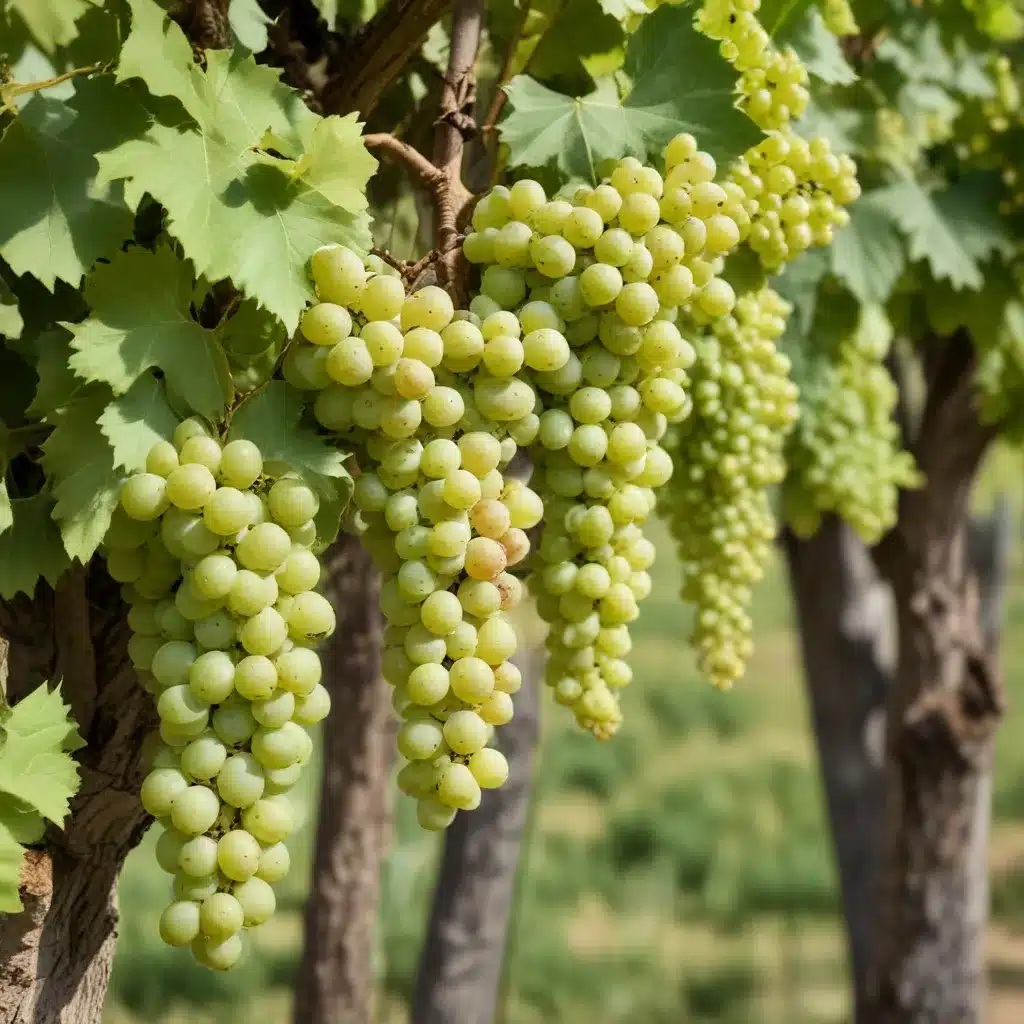
Riesling is a white wine grape variety renowned for its capacity to thrive in diverse environments, from the cool-climate slopes of Germany’s Mosel Valley to the urban enclaves of the Pacific Northwest. As the impacts of climate change reverberate through the world’s wine regions, understanding Riesling’s adaptive capabilities becomes increasingly crucial. Nowhere is this more apparent than in the dynamic urban forests that dot the landscape of TriCounty’s vibrant communities.
Riesling Grapes
Grape Cultivation
Riesling grapes originate from the Rhine region of Germany, where they have been cultivated for centuries. The grape’s success in this cool, continental climate is largely attributed to its late-ripening nature and high natural acidity. These qualities allow Riesling to develop exceptional flavor and aroma profiles while retaining the refreshing tartness that distinguishes the variety.
Grape Varieties
While the classic Riesling grape is the foundation of the variety, viticulturists have developed numerous clonal selections and mutations over time. These include the Riesling Italico, Riesling Weiss, and Riesling Renano clones, each with subtle variations in berry size, cluster morphology, and phenolic composition. The adaptability of Riesling has allowed it to flourish in diverse terroirs, from the steep, rocky slopes of the Mosel to the volcanic soils of Washington’s Yakima Valley.
Grape Characteristics
Riesling grapes are characterized by their thin skins, high acidity, and pronounced aromatic profiles. The variety typically exhibits a spectrum of citrus, stone fruit, and floral notes, with mineral and petrol undertones developing in mature wines. This complex flavor profile, combined with the grape’s natural residual sugar levels, allows Riesling to produce a wide range of wine styles, from bone-dry to lusciously sweet.
Wine Production
Winemaking Process
The winemaking approach for Riesling emphasizes gentle handling and minimal intervention to preserve the grape’s inherent elegance and purity of flavor. Producers often utilize gravity-flow systems and cool fermentation temperatures to maintain the wine’s delicate aromas and crisp acidity. The use of stainless steel tanks or neutral oak barrels is common, as these vessels allow the terroir-driven characteristics of the grape to shine.
Wine Styles
Riesling wines can range from bone-dry to intensely sweet, with a diverse spectrum of styles in between. Dry Rieslings showcase the grape’s steely minerality and citrus notes, while off-dry and medium-sweet versions highlight the grape’s natural fruit flavors and floral aromas. Late harvest and ice wine styles, produced from grapes affected by noble rot, offer decadent, honeyed expressions of Riesling.
Wine Tasting
Tasting Riesling wines reveals a fascinating interplay of acidity, sweetness, and flavor complexity. The variety’s high natural acidity provides a refreshing backbone, while the range of residual sugar levels creates a spectrum of dryness to sweetness. Flavors can include citrus (lemon, lime, grapefruit), stone fruit (peach, apricot, nectarine), floral (jasmine, honeysuckle), and mineral (slate, wet stone) notes, often with a subtle petrol or kerosene character in older wines.
Urban Forestry
Urban Tree Canopy
The urban forests that grace the communities of TriCounty are dynamic, ever-evolving ecosystems that profoundly impact the local microclimate. The tree canopy intercepts sunlight, regulates temperature, and filters air pollutants, creating a unique growing environment for plants and cultivars like Riesling grapes.
Urban Microclimate
The urban heat island effect, whereby built environments absorb and retain more heat than surrounding rural areas, can significantly influence the growing conditions for Riesling grapes. The tree canopy can mitigate these effects, providing cooler temperatures and higher humidity levels that more closely resemble the grape’s preferred cool-climate habitat.
Urban Soil Conditions
The urban soil environment presents its own unique challenges for Riesling grape cultivation. Compacted, nutrient-poor soils and the presence of pollutants can stress the vines and impact fruit quality. However, the incorporation of organic matter and biochar into the soil, as well as strategic rootstock selection, can help Riesling vines thrive in these conditions.
Riesling Wine Adaptation
Climate Adaptation
Riesling’s inherent adaptability allows the grape to flourish in the dynamic urban forestry settings of TriCounty. The tree canopy’s ability to moderate temperature extremes and regulate moisture levels creates a microclimate that closely mirrors the cool-climate conditions where Riesling excels. This climatic resilience enables the grape to maintain its signature acidity and flavor profile, even in the face of the urban heat island effect.
Soil Adaptation
While urban soils can present challenges, Riesling vines demonstrate a remarkable capacity to adapt. The grape’s deep, extensive root system allows it to access water and nutrients in even the most compacted and degraded soil environments. Furthermore, the incorporation of organic amendments and biochar can enhance soil structure, fertility, and water-holding capacity, creating an optimal growing medium for Riesling.
Canopy Management
Skilled viticulturists in TriCounty’s urban forests employ canopy management techniques to optimize Riesling grape development. Leaf and shoot thinning enhance air circulation and light penetration, promoting even ripening and disease resistance. Shoot positioning and trellising systems direct the vines’ growth, ensuring balanced canopy architecture and improved fruit quality.
By leveraging the adaptive capabilities of Riesling grapes and the ecosystem services provided by urban forests, winemakers in TriCounty can craft exceptional wines that reflect the unique terroir of their local microclimate. As the impacts of climate change continue to reshape the global wine industry, the resilience of Riesling in urban environments serves as a testament to the grape’s enduring relevance and the essential role of urban forestry in sustainable viticulture. To explore the exceptional Riesling wines produced in TriCounty, visit www.tricountytreecare.com.


